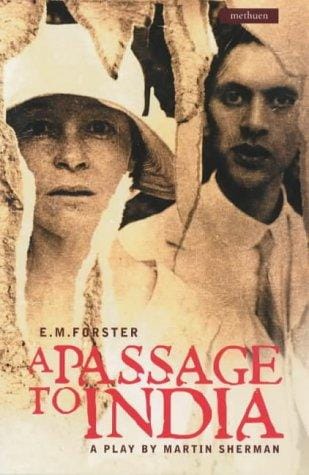A Passage to India: Exploring Culture, Conflict, and Connection
Explore E. M. Forster’s classic novel A Passage to India—its plot, themes, characters, and enduring legacy—in this concise 800-word guide.

Introduction to A Passage to India
Published in 1924, E. M. Forster’s "A Passage to India" remains one of the most discussed novels of the twentieth century. Set against the backdrop of British colonial rule, the book examines the complexities of friendship, faith, and misunderstanding between colonizer and colonized. Blending intricate characterization with philosophical insight, Forster delivers a narrative that is as politically resonant today as it was nearly a century ago.
Plot Overview
The story centers on Dr. Aziz, a young Muslim physician in the fictional city of Chandrapore. When Aziz meets the curious Englishwoman Mrs. Moore and her future daughter-in-law Adela Quested, a fragile friendship begins. Yet a seemingly innocent excursion to the Marabar Caves turns disastrous when Adela accuses Aziz of assault. The sensational trial that follows exposes the simmering racial tensions between the Indian population and the British ruling class, ultimately fracturing relationships and hardening prejudices.
Forster structures the novel in three sections—Mosque, Caves, and Temple—each symbolically aligned with stages of the narrative and corresponding religious or spiritual motifs. The journey from polite curiosity to outright hostility, and finally to a tentative hope for reconciliation, forms the emotional spine of the book.
Major Themes
Colonialism and Power
Few novels capture the invisible architecture of colonial domination like "A Passage to India." Through casual conversations, exclusive clubs, and the British legal system, Forster illustrates how power is exerted in both overt and subtle ways. The trial of Dr. Aziz becomes a microcosm of the empire, showcasing the prejudicial mechanisms that sustain colonial rule.
Cultural Misunderstanding
The novel’s most enduring theme is perhaps the impossibility of true understanding across cultural lines under unequal power dynamics. Whether in language, religion, or social customs, each interchange between the British and Indians is fraught with misinterpretation. The Marabar Caves amplify this confusion with an echo that reduces all sounds to a single, meaningless boom, symbolizing communication breakdown.
Friendship and Human Connection
Despite the barriers, Forster insists on the potential for individual relationships to transcend political divides. The bond between Dr. Aziz and the idealistic schoolmaster Cyril Fielding suggests that genuine friendship is possible, but only when stripped of imperial trappings. Their parting words—"No, not yet... No, not there"—leave open the possibility that in a free India, friendship could finally thrive.
Character Analysis
Dr. Aziz
Charismatic, impulsive, and proud, Dr. Aziz represents the educated Indian middle class of his era. His hospitality and naïveté make him both endearing and vulnerable. Aziz’s arc—from an enthusiastic host eager for English approval to a disillusioned nationalist—mirrors the political awakening of many Indians during the late Raj.
Mrs. Moore
Mrs. Moore brings a spiritual depth to the novel. Her initial empathy toward Aziz and contemplation of the Indian landscape embody Forster’s message that connection is possible. Yet her terrifying experience in the caves and subsequent death en route to England highlight the psychological toll of cultural dislocation.
Adela Quested
Adela arrives in India with a sincere desire to "see the real India," but her rationalist mindset and societal conditioning leave her ill-equipped to interpret the subcontinent’s complexities. Her hallucination—or panic attack—in the Marabar Caves becomes the catalyst for the trial, reflecting layers of repressed fear and colonial guilt.
Cyril Fielding
The liberal-minded schoolmaster Fielding exemplifies the small segment of Britons critical of imperial arrogance. His willingness to defend Aziz puts him at odds with his compatriots, yet even Fielding struggles against ingrained biases. His character demonstrates that goodwill alone cannot dismantle systemic injustice.
Historical Context
Written during a period of intensified Indian nationalism, "A Passage to India" foreshadows the end of British rule in 1947. The novel draws on Forster’s own experiences in India in 1912 and 1921, as well as his friendship with Indian Muslim scholar Syed Ross Masood. When first released, the book was both celebrated and condemned; British officials criticized its portrayal of racial arrogance, while Indian readers appreciated its candid depiction of colonial oppression.
Critical Reception
The book garnered immediate acclaim in literary circles, securing Forster’s reputation as a master novelist. Critics praised its nuanced characters and lyrical prose, though some questioned the ambiguity of the Marabar incident. Contemporary scholarship often focuses on its postcolonial dimensions, reading it as a critique of Orientalism and a call for mutual respect.
Legacy and Adaptations
"A Passage to India" continues to influence writers and filmmakers exploring colonial legacies. David Lean’s 1984 film adaptation, starring Victor Banerjee and Judy Davis, earned multiple Academy Award nominations and introduced the story to a new generation. The novel is a staple in university courses on English literature, postcolonial studies, and South Asian history, underscoring its multidisciplinary appeal.
Conclusion
Nearly a hundred years after its publication, "A Passage to India" endures as a profound exploration of the barriers—both external and internal—that divide humanity. With elegant prose and incisive social commentary, E. M. Forster invites readers to question the structures that separate "us" from "them." Though set in a specific historical moment, its insights into power, prejudice, and possibility remain strikingly relevant, offering a timeless reminder that genuine understanding demands empathy, humility, and, above all, equality.



